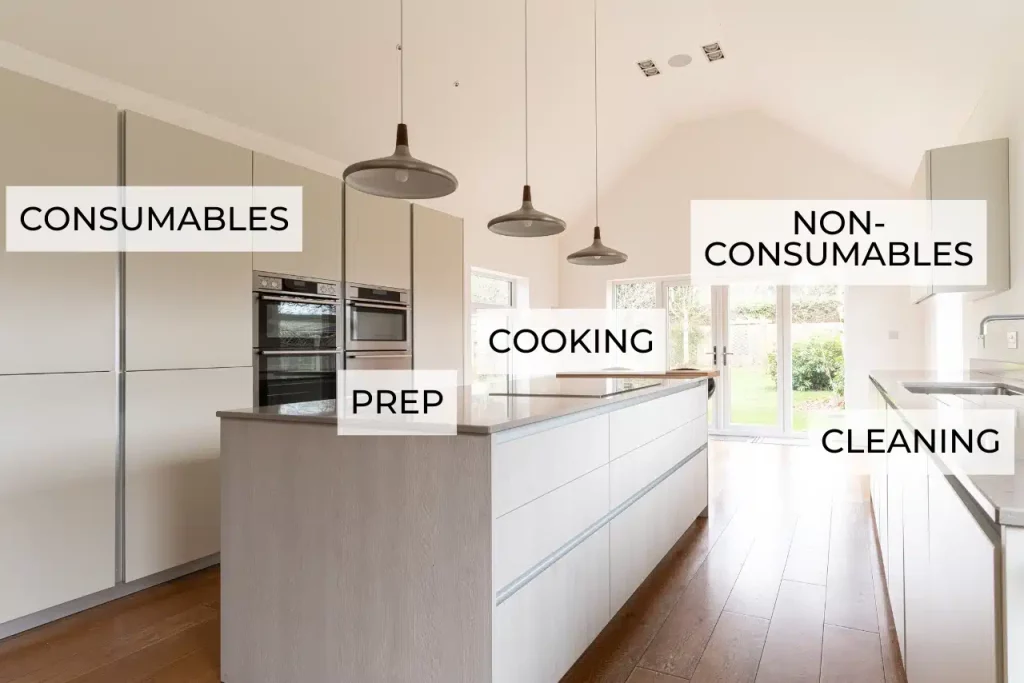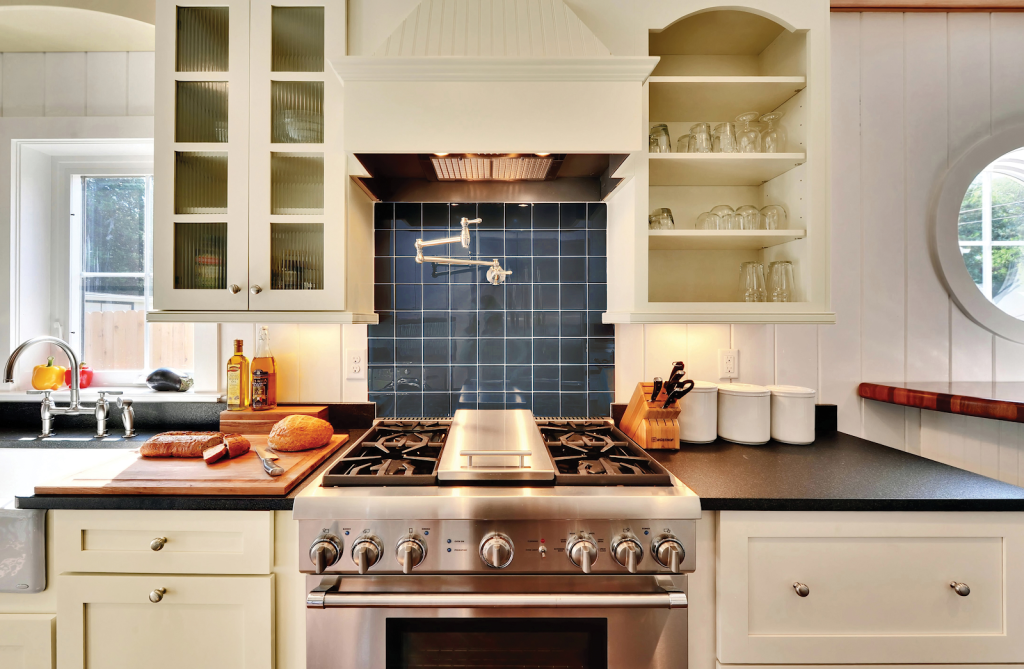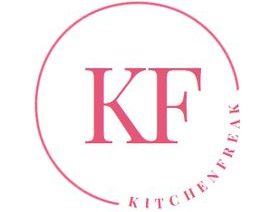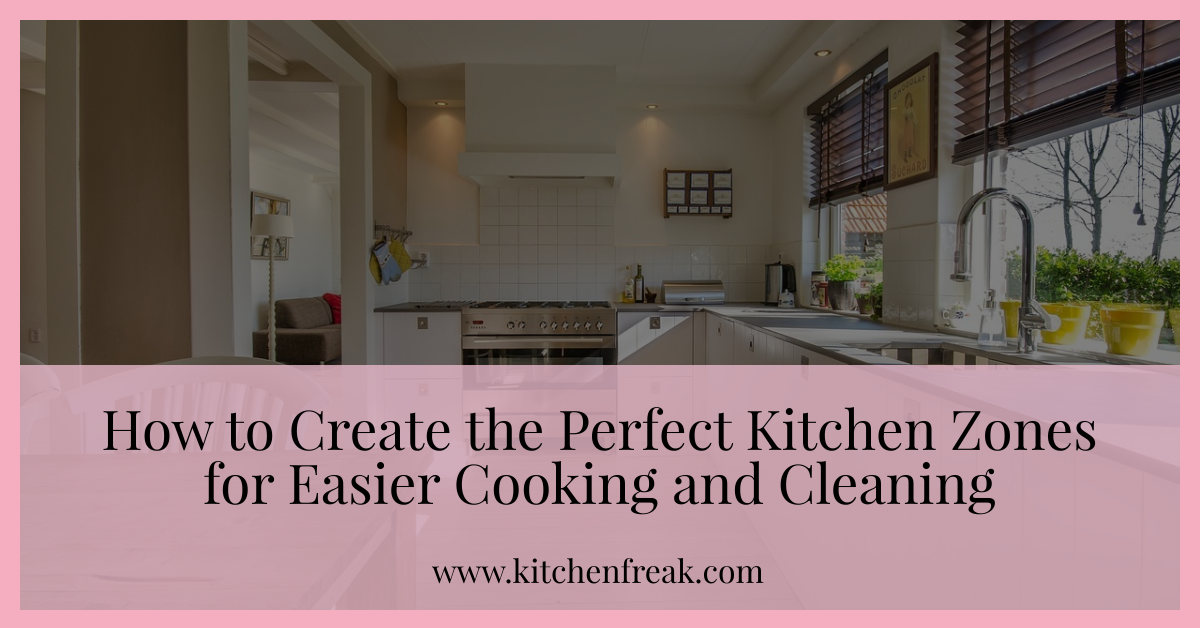Kitchen is the most frequently used room in the house, it serves as the hub of a lot of daily activity. It typically serves as the center of the home, where the entire family congregates frequently throughout the day for everything from cooking to eating, planning your day to completing homework. However, If you’re not cautious, your cooking space may appear as though a tornado has ripped through it, especially if it’s not set up and designed to make cooking go much more smoothly.
There are many different methods to organize your kitchen. Having zones is, in my opinion, the best way to save time and effort in the kitchen. It is incredibly efficient to reduce the amount of time required for preparation and cleanup by grouping similar items together.
Table of Contents
Kitchen Work Zones And Why They Are Important
You may reduce the amount of time you invest in the kitchen by organizing it into various zones.
Today I’m going to share an organizational trick with you that will make this space functional as well as tidy, clutter-free, and simple to maintain. Creating zones in your kitchen is the first and foremost step in kitchen organization. It makes the whole process of cooking so much easier.
Zones are places where a specific activity takes place. So, for instance, your washing zone would be the area close to the sink and dishwasher. The kitchen area consists of the stove and oven. Food preparation takes place in the pantry and food cabinet.
You are essentially creating a boundary when you are dividing your kitchen in zones. While doing so, make a list of the things you want to keep in each zone.
The 5 Common Kitchen Zones
There are typically five kitchen zones in each kitchen. These zones frequently overlap in smaller kitchens, which is entirely fine. Nowadays, the kitchen is used not only for cooking but also for entertaining, dining, and sometimes even working. Therefore, the five zone design takes into consideration the changing requirements of modern families and living arrangements.

I am going to discuss these 5 kitchen zones in detail below:
1. Cooking Zone
Since most cooking takes place on the stove, that should be the location of your cooking zone. If your kitchen is small, your cooking area probably sits close to your prep area. However, you might use a sheet pan or rolling cart in larger kitchens with greater space to transfer all of your essentials from food prep zone to the cooking zone.

It’s a good idea to keep a few culinary tools within easy reach so you can easily grab them when you need them. I keep following kitchen essentials in my cooking zones:
- Cookware: Pots and pans, woks other cooking utensils, dutch oven, etc.
- Cooking Spoons: Such as spatulas, tongs, and wooden cooking spoons.
- Cooking ingredients: I keep few condiments, such as oil, salt and pepper, in the cooking zone that might come in handy during the cooking process (rest are in food prep zone).
2. Food Prep Zone
Well, food preparation zone is my favorite one from all 5. This area is usually near the stove such as the countertop or kitchen island. While designating prep zone for your kitchen, make sure it is spacious enough so that you can easily manage the food preparations.
All the tools you use to prepare ingredients for cooking should be in your prep area. In an ideal scenario, you ought to have all of your ingredients prepared before starting to cook. Under my kitchen countertop, I have utilized the drawers to keep the following stuff I need while prepping for food:
- Measuring tools: Kitchen scale, measuring cups and spoons.
- Tools for cutting and mashing, etc: Masher, zester, Chopping boards, knives, knife sharpener, can opener, grater, garlic crusher, and food processor, etc.
- Bowls for washing, salad spinners, strainers.
- Containers: Tupperware, ziplock bags, prep bowls,
- Condiments: Spice jars, oils, butter, sugar, and sauces etc.

Clutter must be kept out of the area where food is prepared. This entails putting things away and not leaving anything lying around. It is washed in the dishwasher or the sink if it is soiled. It will significantly stress you out, causing you to drop things, and even lead you to cut yourself, if there are too many filthy dishes and equipment lying around your food preparation area. This occurs as a result of your being preoccupied and attempting to work in an unorganized area where your movement is restricted.
3. Consumables
Perishables should be kept in the refrigerator, but you can arrange the rest of your food storage area so that the items you use the most are close to the area where you prepare meals. Put your go-to items on the shelves that are easiest to access. When storing less often used ingredients in cabinets, use the higher shelves. Therefore, be careful to place items like bread, cereal, pasta, and rice, as well as herbs, spices, oils, and seasonings, on the lowest shelves. Put your cocoa powder, icing sugar, dried fruit, and nuts up out of the way if you only bake occasionally.
4. Non-consumables
If possible, keep your glassware and dinnerware close to the sink or dishwasher. It presumably reduces the chance of breakages and makes cleanup a little bit simpler. Once more, have your daily necessities close by, such as cups, cereal bowls, and dinner plates. Then, if feasible, keep heavier, bulkier goods like pots and pans close to your oven in floor units. Bakeware and shallow oven-safe dishes should be kept in a warming drawer, which is the drawer under your oven.
5. Washing Zone or Cleaning Zone
In order to consolidate all of your dishwashing into one area, you should arrange your sink and dishwasher next to one another. Your cleaning supplies are probably already kept there. To divide your kitchen linens, sprays, and sponges, buy multiple storage boxes or baskets. This will allow you to conveniently reach anything when you need it.
You can keep the following items in your cleaning zone:
- brushes, scrubbers and sponges
- dish towel and hand towel
- spray disinfectant
- dish soap
- dish drainer
Work Triangle vs Kitchen Zones
The arrangement of a kitchen’s three primary work areas—the sink, the stove, and the refrigerator—is taken into account while creating the kitchen work triangle, a design principle that emphasizes efficiency and usefulness. Each of these critical workstations is represented by one of the points of an imagined triangle formed by these three sections.
All of it is fantastic, however a modern kitchen nowadays may include more than the three primary parts or may have some portions divided. You might have a separate refrigerator and freezer or a separate cook top, ovens, and microwave. The idea of cooking zones is useful in this situation. And the reasons why I believe it is a better method to approach kitchen design.
Additionally, in the modern household, cooking is frequently the task of more than one person. The three ends of the triangles are likely to have changed to ‘working zones’ within a kitchen, especially in larger kitchens with more ample space, because many households may now have more than one cook functioning at a time.
Recommended: Ideas and Tricks to Organize the Motorhome Kitchen
Kitchen Zones – Frequently Asked Questions
Q: How do I organize my kitchen using zones?
A: To organize your kitchen using zones, you can create different areas for specific tasks such as food prep, cooking, baking, cleaning, and storage. This allows you to easily find everything you need and keep your kitchen clutter-free.
Q: How many zones should I have in my kitchen?
A: It is recommended to have at least 5 zones in your kitchen: a food prep area, a cooking area, a cleaning area, a storage area, and a non-consumables zone. However, you can adjust the number of zones based on your specific needs and the layout of your kitchen.
Q: What is a food prep area?
A: A food prep area is a zone in your kitchen where you can comfortably chop, slice, and prepare ingredients for cooking. It should be equipped with cutting boards, knives, and other necessary tools.
Q: How do I create a baking zone in my kitchen?
A: To create a baking zone, designate an area in your kitchen where you can store all your baking supplies such as mixing bowls, measuring cups, baking dishes, and other related items. This will make it easy for you to grab everything you need when baking.
Q: What is a non-consumables zone?
A: A non-consumables zone is an area in your kitchen where you can store items that are not food-related such as kitchen appliances, cookbooks, and other non-perishable items that you use in your kitchen.
Q: How can organizing my kitchen into zones make my life easier?
A: Organizing your kitchen into zones makes your life easier by allowing you to easily find and access the things you use every day. It also helps to keep your kitchen clutter-free and promotes a more efficient workflow when cooking and cleaning.
Q: How do I plan my kitchen layout with zones?
A: When planning your kitchen layout with zones, consider the flow of your kitchen and how you use your kitchen on a daily basis. Place the different zones in convenient locations that allow for easy movement and access to the items you use most frequently.
Q: Can I create kitchen zones in a small kitchen?
A: Yes, even in a small kitchen, you can create kitchen work zones. The key is to make use of the available space and prioritize the zones that are most important to you. You may need to be more strategic with your storage solutions and maximize vertical space.
Q: How do I keep my kitchen organized using zones?
A: To keep your kitchen organized using zones, follow the principle of “everything in its place”. Make sure that each item has a designated spot and always put things back in their proper zone after use. Regularly declutter and reorganize to maintain an organized kitchen.
Q: Can I create an entertaining zone in my kitchen? If yes, then how?
A: Absolutely! An entertaining zone in your kitchen can be established by designating a specific area for socializing. Consider setting up a kitchen island with bar stools, a coffee or wine station, or even a cozy nook with seating. Ensure this zone is separate from the main cooking and prep areas so guests can mingle without interrupting the cooking process.
Q: Do I need to have a separate pantry if I want to have zones in my kitchen?
A: Not necessarily. While a separate pantry can be a great addition for organization, it’s not a prerequisite for zoning your kitchen. You can establish zones using cabinets, shelves, and storage solutions that fit your space. However, if you have the room, a pantry can serve as a dedicated zone for dry goods and non-perishable items.
Q: Why is it important that the work zones in a kitchen be near each other?
A: Keeping work zones near each other promotes efficiency and reduces unnecessary movement. It ensures that essential tools and ingredients are within arm’s reach, making the cooking process smoother. By having related zones close by, such as the prep zone next to the cooking zone, you can transition seamlessly between tasks.
Q: What geometric shape is considered the best working arrangement in kitchen zones or work areas?
A: The kitchen work triangle, which connects the three primary work centers: the sink, the refrigerator, and the cooktop, is considered the best geometric arrangement. This triangular setup minimizes foot traffic, ensuring a more ergonomic and efficient kitchen workflow.
Anum Basit, the organizing maven and cleaning aficionado behind KitchenFreak, is a devoted stay-at-home mom with a knack for turning chaos into calm. With a passion for writing and a decade of hands-on experience managing a busy household, Anum has cultivated a deep understanding of space utilization, effective cleaning techniques, and sustainable maintenance practices. Her home has become her laboratory, where she experiments with different strategies and shares her findings on her blog.
KitchenFreak began as a way for Anum to document her journey towards creating a clutter-free, easy-to-maintain, and clean kitchen. Today, it’s a go-to resource for fellow parents and homemakers seeking practical advice on kitchen organization, maintenance, and cleaning hacks.
Anum’s expertise isn’t confined to theory; it’s steeped in real-life trials, errors, and triumphs. From discovering the best ways to organize a pantry to finding child-friendly cleaning supplies, Anum’s advice comes from her lived experiences.
Through KitchenFreak, Anum aspires to help others uncover the joy of a well-organized kitchen. Her aim is to inspire, educate, and empower her readers, showing them that no matter how messy things may get, creating a spotless kitchen is possible, one step at a time.

